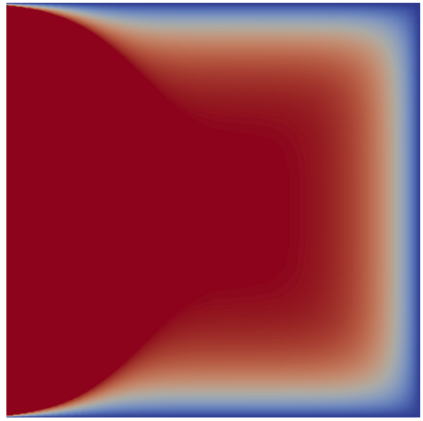Isogeometric Analysis (IgA) has become a viable alternative to the Finite Element Method (FEM) and is typically combined with a time integration scheme within the method of lines for time-dependent problems. However, due to a stagnation of processors clock speeds, traditional (i.e. sequential) time integration schemes become more and more the bottleneck within these large-scale computations, which lead to the development of parallel-in-time methods like the Multigrid Reduced in Time (MGRIT) method. Recently, MGRIT has been succesfully applied by the authors in the context of IgA showing convergence independent of the mesh width, approximation order of the B-spline basis functions and time step size for a variety of benchmark problems. However, a strong dependency of the CPU times on the approximation order was visible when a standard Conjugate Gradient method was adopted for the spatial solves within MGRIT. In this paper we combine MGRIT with a state-of the-art solver (i.e. a p-multigrid method), specifically designed for IgA, thereby significantly reducing the overall computational costs of MGRIT. Furthermore, we investigate the performance of MGRIT and its scalability on modern copmuter architectures.
翻译:最近,在《国际热带木材协定》的背景下,《国际热带木材条约》的作者们充分运用了《国际热带木材条约》,显示与各种基准问题不同的网状宽度、B-春季基础功能的近似值和时间步骤大小不相容,然而,由于加工器时钟速度停滞,传统(即顺序)时间一体化计划在这些大规模计算中日益成为瓶颈,从而导致制定多格里格减少时间方法(MGRIT)等平行时间方法。在这份文件中,我们把《全球热带木材条约》与“最新技术解决办法”(i.e. p-多格丽德方法)结合起来,专门为《国际热带木材协定》设计,从而大大降低了其现代计算成本。








